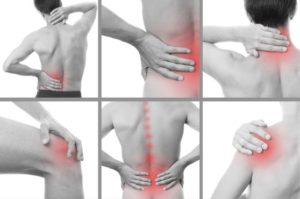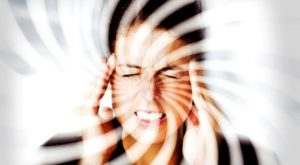
Physiotherapy is a branch of health that works to prevent and treat functional limitations resulting from an injury or illness that affects the musculoskeletal system (bones, muscles, joints) and the neurological system.
Our physiotherapists are self-employed and highly qualified health professionals who favor an approach that is customer centered, safe and of high quality. Their therapeutic services are aimed at reaching optimal health results by using recognized therapeutic approaches.
You can be treated in physiotherapy without having a medical prescription, or without having to meet with your doctor first. Early treatment of your condition by one of our physiotherapists will get you back on your feet quickly.

Whether it is ligament sprain, luxation or subluxation, bursitis, capsulitis, synovitis or osteoarthritis, our physiotherapists are the therapists of choice for these types of problems.
Muscle injuries come in many forms, such as contusion, tearing, stretching, tendinitis, or tenosynovitis. Our physiotherapists assess and treat muscle problems so you can get back on your feet as quickly as possible.
Lumbar or cervical sprains, herniated disc, vertebral or sacroiliac instability, scoliosis, vertebral fracture, sciatica or facet syndrome: when we have one of these wounds, we are quickly limited in our activities. The physiotherapist works alone or in a team with one of our osteopaths or massage therapists, in order to restore you to your normal state.
Sciatica is a pain in the lower limb that starts from the lumbosacral hinge or buttock and that sometimes radiates to the foot through the back or side of the thigh, and lateral calf.
Brachialgia is pain in the upper limb that starts from the neck and sometimes radiates to the fingertips.
Numbness or paresthesia is a change in skin sensitivity that often occurs as a tingling felt in a part of the body. In either of these peripheral nerve disorders, the causes may vary, but irritation of the peripheral nerve is always present.
During your first visit, our physiotherapists evaluate your symptoms to find the cause of your sciatica or brachialgia.
You are always in good hands with our therapists.
Sports injuries are very diverse. Both articular and muscular, they often present as back, neck, shoulder, elbow, wrist, hip, knee, ankle or foot pain. Of all sports injuries, the sprain is the most common. Physiotherapy is the therapy of choice for injured athletes.
Our physiotherapists will get you back on your feet to continue practicing your favorite sports!

Vertigo is a very uncomfortable and limiting phenomenon that affects many people every year, regardless of age or gender. Benign positional paroxysmal vertigo (BVP) alone accounts for over 90% of vertigo cases.
The V.P.P.B. is often confused with dizziness, it has a very specific origin that our physiotherapists and osteopaths can evaluate and treat effectively. You will be surprised by the results!

The practice of physiotherapy with dry needles consists in the introduction of a fine needle in a specific point of the muscle. This approach allows for instant relaxation of muscle fibers, promotes better blood circulation, controls inflammation, and relieves pain.
The Professional College of Physiotherapy of Quebec (OPPQ) offers this 102-hour (9-month) post-graduate training to physiotherapists since 2011.
After a complete evaluation of your condition, Anik Laflamme, will be able to use this approach if you suffer from any of the following problems:
Manual therapy in physiotherapy is the approach by which the therapist uses his hands to assess and treat orthopedic conditions as well as certain neurological conditions. Often, problematic orthopedic conditions present loss of mobility and range of motion. These joint limitations can cause significant changes in posture and gait. In the long run, these changes bring discomfort, pain and possibly loss of function.
The purpose of manual therapy is to restore normal mobility to the joints. There are three groups of techniques:
After a complete assessment of your condition, our physiotherapists will determine a physiotherapeutic diagnosis based on your goals using a combination of techniques to optimize healing.
Generally, manual therapy will be used in combination with specific exercises to restore range of motion and strength, endurance and muscle stability. The goal is to restore your functions to their optimal state.

Electrotherapy in physiotherapy is a form of treatment using various devices to promote the healing mechanisms of damaged structures, to reduce pain and inflammation, to increase strength and muscle control and to ultimately increase joint mobility. Electrotherapy devices use low power currents or sound waves that are applied to the surface of the skin in a non-invasive manner. This type of method is usually combined with other therapeutic techniques to optimize healing.
At the Centre TMO, we use various methods:
Therapeutic ultrasound
Among the electrotherapy devices available in physiotherapy, the therapeutic ultrasound is the one that is the most used. Ultrasound therapy is mainly used to treat sprains, tendonitis and bursitis, but it is also very effective in treating congestion of the breast canals (painful blockages during breastfeeding).
Therapeutic ultrasound treatment in physiotherapy is painless; it is similar to that of ultrasound machines. Unlike ultrasound diagnostic which is used to visualize tissue, therapeutic ultrasound does not allow to see inside the body, but sends ultrasonic waves that promote the healing of damaged and inflamed tissue.
TENS and interference currents
Both types of electrotherapy devices are used to reduce acute or chronic pain and to reduce swelling.
The electrical stimulation transmitted by electrodes affixed to the skin travels to the nerves. This allows, on the one hand, to effectively reduce the intensity of pain perceived, by way of substituting painful nerve impulses by a new sensation that suppresses the perception of pain by the brain. On the other hand, it promotes the resorption of swelling through blood pumping to the area.
Neuromuscular stimulator
In physiotherapy, neuromuscular electrical stimulation is used to improve the response of motor units of the muscle and thus prevent atrophy (muscle melting). The electrical stimulation transmitted by electrodes affixed to the skin travels to the targeted muscle fibers.
Our physiotherapists use this type of approach in cases where a muscle is excessively weak (eg when removing a cast after several weeks of immobilization).
Surgery inevitably leaves scars. Even very small, they can adhere to the surrounding muscles and tissues. These adhesions make the wound stiff, red and swollen, sometimes painful or uncomfortable. The scar massage should begin generally three weeks after the surgery, but can be started even several months later. Proper scarring massage improves appearance, reduces pain or discomfort and improves flexibility of body movement.
After an assessment of your wounds, our therapists can tell you more precisely when to start the massage of your scars and they can teach you the proper technique for you to practice self-massage. In addition, you can benefit from professional scar massage by one of our therapists. Most often, our therapists use cupping to clear scar adhesions. You will be amazed at the results!
If you have any doubts about the healing of a scar, talk to your doctor, nurse, physiotherapist or osteopath.
Myofascial release techniques target the muscles and their fascia in order to reduce their harmful tensions. After an assessment of your condition, our therapists will determine which tensions contribute to your reason for consultation and they will use their hands to release targeted myofascial tensions.
Myofascial tensions often contribute to pain occuring in areas further away from your main pain area. This phenomenon is caused by myofascial tension chains. That’s why our physiotherapists take into account all areas of the body that are related to your problem.
Our services by telephone interview or by video-conference will allow you to benefit from the expertise of a professional in neuro-musculo-skeletal injuries who will personalize his intervention in relation to your specific condition.
During this interview, your physiotherapist may:
After the consultation, you will receive an email which summarizes the advice discussed, the detailed exercises and an insurance receipt.
NOTE: Secure payment is done online. As soon as you have chosen an appointment in your physiotherapist’s schedule, watch your email box to follow the instructions for setting up the telephone or video-conference meeting.
CUSTOMER BASE
Tele-physiotherapy applies to consultations paid for by the Commission for standards, equity, health and safety at work (CNESST), the Société de l’assurance automobile du Québec (SAAQ) and by private insurers, depending on insurance coverage.
*** In order to avoid any surprises, please check carefully whether the tele-physiotherapy (tele-rehabilitation) service is covered by your insurer before making your reservation. ***
Copyright © 2025 Centre TMO: Physiotherapy-Osteopathy-Massage Therapy. All rights reserved. Privacy policy